Every star visible to us during the night belongs to the Milky Way. However, if you direct your gaze towards the fuzzy object that appears overhead in the winter, with an angular dimension similar to that of a full moon, what you’re witnessing is a cluster of stars separate from the Milky Way, and even surpasses our galaxy in number. This cosmic body is known as the Andromeda Galaxy.
Without a telescope, you can’t tell that it is made up of individual stars; it just looks like a fuzzy patch. What makes things a little depressing, though, is that according to scientific estimations, our Milky Way galaxy is going to collide with the Andromeda Galaxy in about 4.5 billion years.
And as you probably understand, that won’t be good at all. But worry not! We can guarantee you that 4.5 billion years from now you will DEFINITELY be dead already.
So, instead of being sad about what happens in 4.5 billion years, why don’t you read 25 Almost Unbelievable Facts About the Milky Way and educate yourself about our beautiful “common home”?

The Milky Way is as old as the universe itself
 https://www.amazon.com/Visual-Galaxy-Ultimate-Guide-Beyond/dp/142622060X/ref=pd_sbs_14_img_0/135-1061482-6978844?_encoding=UTF8&pd_rd_i=142622060X&pd_rd_r=26290842-3e34-44e3-9ac8-00c316a43fa3&pd_rd_w=p9n0s&pd_rd_wg=YYc4I&pf_rd_p=5cfcfe89-300f-47d2-b1ad-a4e27203a02a&pf_rd_r=6RHVBQYBHBQQYXA9XT5B&psc=1&refRID=6RHVBQYBHBQQYXA9XT5B
https://www.amazon.com/Visual-Galaxy-Ultimate-Guide-Beyond/dp/142622060X/ref=pd_sbs_14_img_0/135-1061482-6978844?_encoding=UTF8&pd_rd_i=142622060X&pd_rd_r=26290842-3e34-44e3-9ac8-00c316a43fa3&pd_rd_w=p9n0s&pd_rd_wg=YYc4I&pf_rd_p=5cfcfe89-300f-47d2-b1ad-a4e27203a02a&pf_rd_r=6RHVBQYBHBQQYXA9XT5B&psc=1&refRID=6RHVBQYBHBQQYXA9XT5B Scientists believe that the Milky Way is one of the older galaxies in the universe.
It was formed about 13.6 billion years ago and is almost as old as the universe itself, which formed about 13.7 billion years ago.
The Milky Way's name is ancient
 https://www.amazon.com/Visual-Galaxy-Ultimate-Guide-Beyond/dp/142622060X/ref=pd_sbs_14_img_0/135-1061482-6978844?_encoding=UTF8&pd_rd_i=142622060X&pd_rd_r=26290842-3e34-44e3-9ac8-00c316a43fa3&pd_rd_w=p9n0s&pd_rd_wg=YYc4I&pf_rd_p=5cfcfe89-300f-47d2-b1ad-a4e27203a02a&pf_rd_r=6RHVBQYBHBQQYXA9XT5B&psc=1&refRID=6RHVBQYBHBQQYXA9XT5B
https://www.amazon.com/Visual-Galaxy-Ultimate-Guide-Beyond/dp/142622060X/ref=pd_sbs_14_img_0/135-1061482-6978844?_encoding=UTF8&pd_rd_i=142622060X&pd_rd_r=26290842-3e34-44e3-9ac8-00c316a43fa3&pd_rd_w=p9n0s&pd_rd_wg=YYc4I&pf_rd_p=5cfcfe89-300f-47d2-b1ad-a4e27203a02a&pf_rd_r=6RHVBQYBHBQQYXA9XT5B&psc=1&refRID=6RHVBQYBHBQQYXA9XT5B In Greek mythology, the Milky Way was created when Hera spilled her milk while suckling Heracles (Hercules).
It was also described as the road to Mount Olympus, or the path of ruin made by the Helios’ (the sun) chariot.
It was made from other galaxies
 https://www.amazon.com/Visual-Galaxy-Ultimate-Guide-Beyond/dp/142622060X/ref=pd_sbs_14_img_0/135-1061482-6978844?_encoding=UTF8&pd_rd_i=142622060X&pd_rd_r=26290842-3e34-44e3-9ac8-00c316a43fa3&pd_rd_w=p9n0s&pd_rd_wg=YYc4I&pf_rd_p=5cfcfe89-300f-47d2-b1ad-a4e27203a02a&pf_rd_r=6RHVBQYBHBQQYXA9XT5B&psc=1&refRID=6RHVBQYBHBQQYXA9XT5B
https://www.amazon.com/Visual-Galaxy-Ultimate-Guide-Beyond/dp/142622060X/ref=pd_sbs_14_img_0/135-1061482-6978844?_encoding=UTF8&pd_rd_i=142622060X&pd_rd_r=26290842-3e34-44e3-9ac8-00c316a43fa3&pd_rd_w=p9n0s&pd_rd_wg=YYc4I&pf_rd_p=5cfcfe89-300f-47d2-b1ad-a4e27203a02a&pf_rd_r=6RHVBQYBHBQQYXA9XT5B&psc=1&refRID=6RHVBQYBHBQQYXA9XT5B In order for the Milky Way to achieve its current size and shape, it has consumed other galaxies throughout its history.
Our galaxy is currently consuming the Canis Major Dwarf Galaxy by adding the smaller galaxy’s stars to its own spiral. (Talk about an appetite!)
Unimaginable speeds
 https://www.amazon.com/Visual-Galaxy-Ultimate-Guide-Beyond/dp/142622060X/ref=pd_sbs_14_img_0/135-1061482-6978844?_encoding=UTF8&pd_rd_i=142622060X&pd_rd_r=26290842-3e34-44e3-9ac8-00c316a43fa3&pd_rd_w=p9n0s&pd_rd_wg=YYc4I&pf_rd_p=5cfcfe89-300f-47d2-b1ad-a4e27203a02a&pf_rd_r=6RHVBQYBHBQQYXA9XT5B&psc=1&refRID=6RHVBQYBHBQQYXA9XT5B
https://www.amazon.com/Visual-Galaxy-Ultimate-Guide-Beyond/dp/142622060X/ref=pd_sbs_14_img_0/135-1061482-6978844?_encoding=UTF8&pd_rd_i=142622060X&pd_rd_r=26290842-3e34-44e3-9ac8-00c316a43fa3&pd_rd_w=p9n0s&pd_rd_wg=YYc4I&pf_rd_p=5cfcfe89-300f-47d2-b1ad-a4e27203a02a&pf_rd_r=6RHVBQYBHBQQYXA9XT5B&psc=1&refRID=6RHVBQYBHBQQYXA9XT5B Our solar system orbits the galaxy’s center at around 827,000 kph (514,000 mph).
To get an idea of what these numbers actually mean, keep in mind that an object going this fast could travel around the Earth’s equator in less than three minutes.
It’s really dusty and gassy
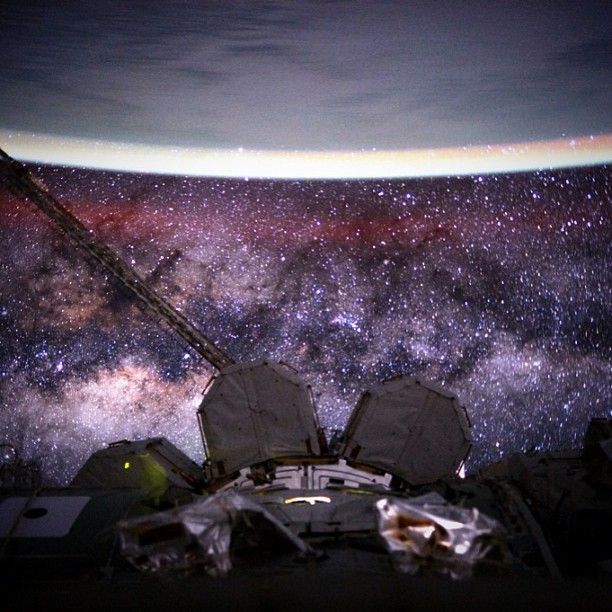 https://www.amazon.com/Visual-Galaxy-Ultimate-Guide-Beyond/dp/142622060X/ref=pd_sbs_14_img_0/135-1061482-6978844?_encoding=UTF8&pd_rd_i=142622060X&pd_rd_r=26290842-3e34-44e3-9ac8-00c316a43fa3&pd_rd_w=p9n0s&pd_rd_wg=YYc4I&pf_rd_p=5cfcfe89-300f-47d2-b1ad-a4e27203a02a&pf_rd_r=6RHVBQYBHBQQYXA9XT5B&psc=1&refRID=6RHVBQYBHBQQYXA9XT5B
https://www.amazon.com/Visual-Galaxy-Ultimate-Guide-Beyond/dp/142622060X/ref=pd_sbs_14_img_0/135-1061482-6978844?_encoding=UTF8&pd_rd_i=142622060X&pd_rd_r=26290842-3e34-44e3-9ac8-00c316a43fa3&pd_rd_w=p9n0s&pd_rd_wg=YYc4I&pf_rd_p=5cfcfe89-300f-47d2-b1ad-a4e27203a02a&pf_rd_r=6RHVBQYBHBQQYXA9XT5B&psc=1&refRID=6RHVBQYBHBQQYXA9XT5B Though it may not look like it to the casual observer, the Milky Way is full of dust and gas. This matter makes up a whopping 10-15% of the luminous/visible matter in our galaxy, with the remainder being the stars.
Our galaxy is roughly 100,000 light-years across, and we can only see about 6,000 light-years into the disk in the visible spectrum. Still, when light pollution is not significant, the dusty ring of the Milky Way can be discerned in the night sky.
Unidentified number of stars
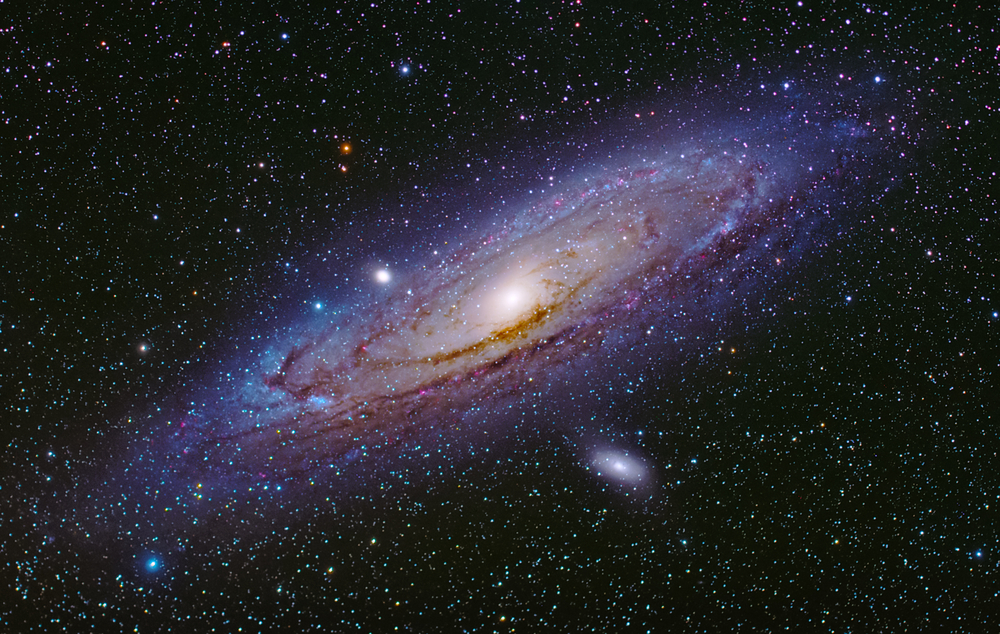 https://www.amazon.com/Visual-Galaxy-Ultimate-Guide-Beyond/dp/142622060X/ref=pd_sbs_14_img_0/135-1061482-6978844?_encoding=UTF8&pd_rd_i=142622060X&pd_rd_r=26290842-3e34-44e3-9ac8-00c316a43fa3&pd_rd_w=p9n0s&pd_rd_wg=YYc4I&pf_rd_p=5cfcfe89-300f-47d2-b1ad-a4e27203a02a&pf_rd_r=6RHVBQYBHBQQYXA9XT5B&psc=1&refRID=6RHVBQYBHBQQYXA9XT5B
https://www.amazon.com/Visual-Galaxy-Ultimate-Guide-Beyond/dp/142622060X/ref=pd_sbs_14_img_0/135-1061482-6978844?_encoding=UTF8&pd_rd_i=142622060X&pd_rd_r=26290842-3e34-44e3-9ac8-00c316a43fa3&pd_rd_w=p9n0s&pd_rd_wg=YYc4I&pf_rd_p=5cfcfe89-300f-47d2-b1ad-a4e27203a02a&pf_rd_r=6RHVBQYBHBQQYXA9XT5B&psc=1&refRID=6RHVBQYBHBQQYXA9XT5B How many stars are in the Milky Way? Ever wondered? Even astronomers argue over the best way to calculate this. Their telescopes see only the brightest stars in our galaxy, and many are hidden by obscuring gas and dust.
What they know for a fact, however, is that there are literally billions of unseen stars out there. So, when we look at the Milky Way at night, we only see about 0.0000025% of the galaxy’s hundreds of billions of stars.
Red dwarfs: the most common star in the Milky Way galaxy
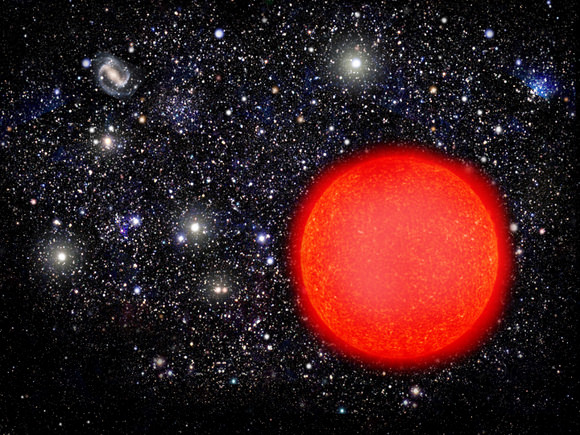 https://www.amazon.com/Visual-Galaxy-Ultimate-Guide-Beyond/dp/142622060X/ref=pd_sbs_14_img_0/135-1061482-6978844?_encoding=UTF8&pd_rd_i=142622060X&pd_rd_r=26290842-3e34-44e3-9ac8-00c316a43fa3&pd_rd_w=p9n0s&pd_rd_wg=YYc4I&pf_rd_p=5cfcfe89-300f-47d2-b1ad-a4e27203a02a&pf_rd_r=6RHVBQYBHBQQYXA9XT5B&psc=1&refRID=6RHVBQYBHBQQYXA9XT5B
https://www.amazon.com/Visual-Galaxy-Ultimate-Guide-Beyond/dp/142622060X/ref=pd_sbs_14_img_0/135-1061482-6978844?_encoding=UTF8&pd_rd_i=142622060X&pd_rd_r=26290842-3e34-44e3-9ac8-00c316a43fa3&pd_rd_w=p9n0s&pd_rd_wg=YYc4I&pf_rd_p=5cfcfe89-300f-47d2-b1ad-a4e27203a02a&pf_rd_r=6RHVBQYBHBQQYXA9XT5B&psc=1&refRID=6RHVBQYBHBQQYXA9XT5B The most common stars in the galaxy are red dwarfs. What exactly is a red dwarf? It’s a cool star about a tenth of the mass of the sun.
Once thought unsuitable for potential life-bearing planets, red dwarfs are now considered potential suspects.
The "supernovae process"
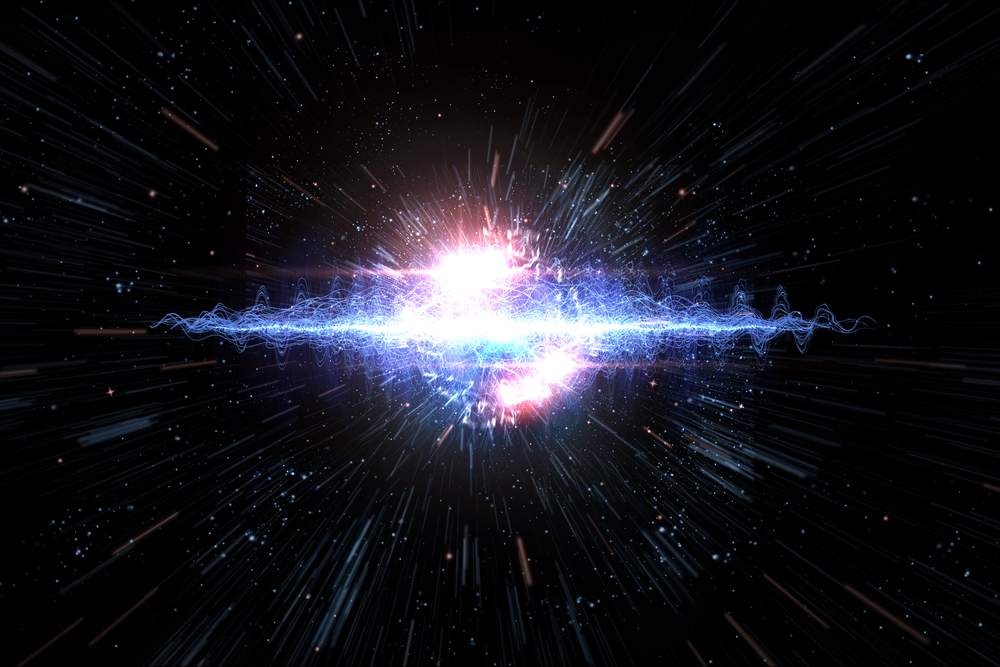 https://www.amazon.com/Visual-Galaxy-Ultimate-Guide-Beyond/dp/142622060X/ref=pd_sbs_14_img_0/135-1061482-6978844?_encoding=UTF8&pd_rd_i=142622060X&pd_rd_r=26290842-3e34-44e3-9ac8-00c316a43fa3&pd_rd_w=p9n0s&pd_rd_wg=YYc4I&pf_rd_p=5cfcfe89-300f-47d2-b1ad-a4e27203a02a&pf_rd_r=6RHVBQYBHBQQYXA9XT5B&psc=1&refRID=6RHVBQYBHBQQYXA9XT5B
https://www.amazon.com/Visual-Galaxy-Ultimate-Guide-Beyond/dp/142622060X/ref=pd_sbs_14_img_0/135-1061482-6978844?_encoding=UTF8&pd_rd_i=142622060X&pd_rd_r=26290842-3e34-44e3-9ac8-00c316a43fa3&pd_rd_w=p9n0s&pd_rd_wg=YYc4I&pf_rd_p=5cfcfe89-300f-47d2-b1ad-a4e27203a02a&pf_rd_r=6RHVBQYBHBQQYXA9XT5B&psc=1&refRID=6RHVBQYBHBQQYXA9XT5B The Milky Way is always losing stars through supernovae. What exactly do astronomers describe as supernovae?
Well, that is what they call the process in which a large explosion occurs at the end of a star’s life cycle, which removes almost all its mass.
Milky Way consists of many types of energy
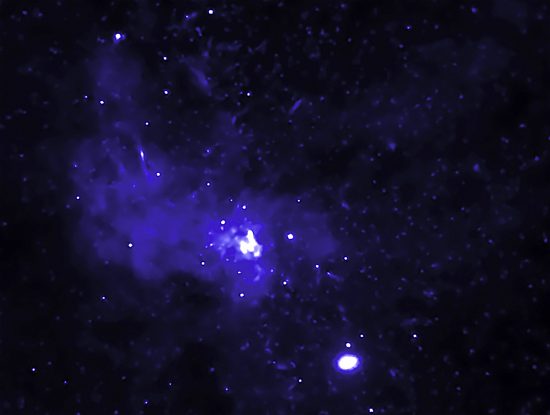 https://www.amazon.com/Visual-Galaxy-Ultimate-Guide-Beyond/dp/142622060X/ref=pd_sbs_14_img_0/135-1061482-6978844?_encoding=UTF8&pd_rd_i=142622060X&pd_rd_r=26290842-3e34-44e3-9ac8-00c316a43fa3&pd_rd_w=p9n0s&pd_rd_wg=YYc4I&pf_rd_p=5cfcfe89-300f-47d2-b1ad-a4e27203a02a&pf_rd_r=6RHVBQYBHBQQYXA9XT5B&psc=1&refRID=6RHVBQYBHBQQYXA9XT5B
https://www.amazon.com/Visual-Galaxy-Ultimate-Guide-Beyond/dp/142622060X/ref=pd_sbs_14_img_0/135-1061482-6978844?_encoding=UTF8&pd_rd_i=142622060X&pd_rd_r=26290842-3e34-44e3-9ac8-00c316a43fa3&pd_rd_w=p9n0s&pd_rd_wg=YYc4I&pf_rd_p=5cfcfe89-300f-47d2-b1ad-a4e27203a02a&pf_rd_r=6RHVBQYBHBQQYXA9XT5B&psc=1&refRID=6RHVBQYBHBQQYXA9XT5B Visible light is only one form of energy. We get this directly from the stars and other objects in the Milky Way.
Our galaxy also consists of other types of energy, such as infrared light, radio waves, gamma rays, dark matter, and X-rays.
We’re surrounded by a dark halo
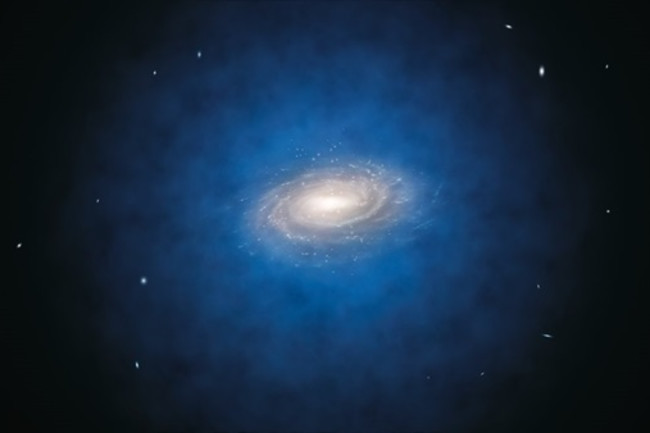 https://www.amazon.com/Visual-Galaxy-Ultimate-Guide-Beyond/dp/142622060X/ref=pd_sbs_14_img_0/135-1061482-6978844?_encoding=UTF8&pd_rd_i=142622060X&pd_rd_r=26290842-3e34-44e3-9ac8-00c316a43fa3&pd_rd_w=p9n0s&pd_rd_wg=YYc4I&pf_rd_p=5cfcfe89-300f-47d2-b1ad-a4e27203a02a&pf_rd_r=6RHVBQYBHBQQYXA9XT5B&psc=1&refRID=6RHVBQYBHBQQYXA9XT5B
https://www.amazon.com/Visual-Galaxy-Ultimate-Guide-Beyond/dp/142622060X/ref=pd_sbs_14_img_0/135-1061482-6978844?_encoding=UTF8&pd_rd_i=142622060X&pd_rd_r=26290842-3e34-44e3-9ac8-00c316a43fa3&pd_rd_w=p9n0s&pd_rd_wg=YYc4I&pf_rd_p=5cfcfe89-300f-47d2-b1ad-a4e27203a02a&pf_rd_r=6RHVBQYBHBQQYXA9XT5B&psc=1&refRID=6RHVBQYBHBQQYXA9XT5B The Milky Way has a halo of dark matter that makes up over 90% of its mass.
What this means is that all we can see, even with telescopes, is less than 10% of the mass of our galaxy. The rest is darkness.
The Milky Way has giant bubbles at its center
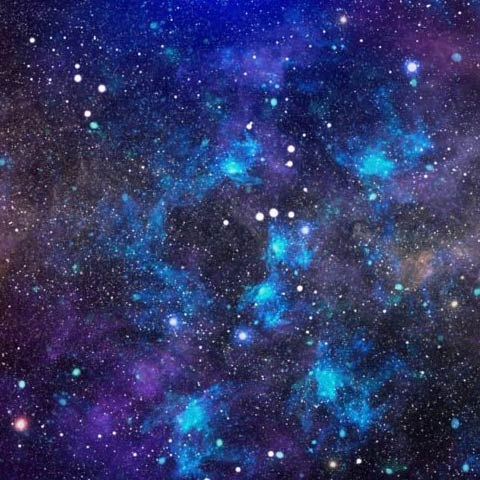 https://www.amazon.com/Visual-Galaxy-Ultimate-Guide-Beyond/dp/142622060X/ref=pd_sbs_14_img_0/135-1061482-6978844?_encoding=UTF8&pd_rd_i=142622060X&pd_rd_r=26290842-3e34-44e3-9ac8-00c316a43fa3&pd_rd_w=p9n0s&pd_rd_wg=YYc4I&pf_rd_p=5cfcfe89-300f-47d2-b1ad-a4e27203a02a&pf_rd_r=6RHVBQYBHBQQYXA9XT5B&psc=1&refRID=6RHVBQYBHBQQYXA9XT5B
https://www.amazon.com/Visual-Galaxy-Ultimate-Guide-Beyond/dp/142622060X/ref=pd_sbs_14_img_0/135-1061482-6978844?_encoding=UTF8&pd_rd_i=142622060X&pd_rd_r=26290842-3e34-44e3-9ac8-00c316a43fa3&pd_rd_w=p9n0s&pd_rd_wg=YYc4I&pf_rd_p=5cfcfe89-300f-47d2-b1ad-a4e27203a02a&pf_rd_r=6RHVBQYBHBQQYXA9XT5B&psc=1&refRID=6RHVBQYBHBQQYXA9XT5B New observations of the galactic center have revealed a pair of giant bubbles at the center of the Milky Way that gives off radio emissions, according to recent research published in Nature.
The bubbles stretch outward from the black hole and extend into space in opposite directions. The billowy lobes resemble the two halves of an hourglass, with the black hole nestled at its waist.
Humans vs. the Milky Way
 https://www.amazon.com/Visual-Galaxy-Ultimate-Guide-Beyond/dp/142622060X/ref=pd_sbs_14_img_0/135-1061482-6978844?_encoding=UTF8&pd_rd_i=142622060X&pd_rd_r=26290842-3e34-44e3-9ac8-00c316a43fa3&pd_rd_w=p9n0s&pd_rd_wg=YYc4I&pf_rd_p=5cfcfe89-300f-47d2-b1ad-a4e27203a02a&pf_rd_r=6RHVBQYBHBQQYXA9XT5B&psc=1&refRID=6RHVBQYBHBQQYXA9XT5B
https://www.amazon.com/Visual-Galaxy-Ultimate-Guide-Beyond/dp/142622060X/ref=pd_sbs_14_img_0/135-1061482-6978844?_encoding=UTF8&pd_rd_i=142622060X&pd_rd_r=26290842-3e34-44e3-9ac8-00c316a43fa3&pd_rd_w=p9n0s&pd_rd_wg=YYc4I&pf_rd_p=5cfcfe89-300f-47d2-b1ad-a4e27203a02a&pf_rd_r=6RHVBQYBHBQQYXA9XT5B&psc=1&refRID=6RHVBQYBHBQQYXA9XT5B The sun and our solar system have orbited the galaxy fewer than 20 times since our solar system was born about 4.6 billion years ago.
Not impressed? Try this one: it has made 1/1250 of a revolution since the origin of humans.
Small galaxies orbit the Milky Way and sometimes crash into it
 https://www.amazon.com/Visual-Galaxy-Ultimate-Guide-Beyond/dp/142622060X/ref=pd_sbs_14_img_0/135-1061482-6978844?_encoding=UTF8&pd_rd_i=142622060X&pd_rd_r=26290842-3e34-44e3-9ac8-00c316a43fa3&pd_rd_w=p9n0s&pd_rd_wg=YYc4I&pf_rd_p=5cfcfe89-300f-47d2-b1ad-a4e27203a02a&pf_rd_r=6RHVBQYBHBQQYXA9XT5B&psc=1&refRID=6RHVBQYBHBQQYXA9XT5B
https://www.amazon.com/Visual-Galaxy-Ultimate-Guide-Beyond/dp/142622060X/ref=pd_sbs_14_img_0/135-1061482-6978844?_encoding=UTF8&pd_rd_i=142622060X&pd_rd_r=26290842-3e34-44e3-9ac8-00c316a43fa3&pd_rd_w=p9n0s&pd_rd_wg=YYc4I&pf_rd_p=5cfcfe89-300f-47d2-b1ad-a4e27203a02a&pf_rd_r=6RHVBQYBHBQQYXA9XT5B&psc=1&refRID=6RHVBQYBHBQQYXA9XT5B When Portuguese explorer Ferdinand Magellan sailed through the Southern Hemisphere in the 16th century, he and his crew were among the first Europeans to report on circular clusters of stars in the night sky, according to the European Southern Observatory.
These clusters are actually small galaxies that orbit our Milky Way, just like planets orbit around a star. So, astronomers decided to name them the Small and Large Magellanic clouds after Ferdinand Magellan.
The Milky Way is on the move
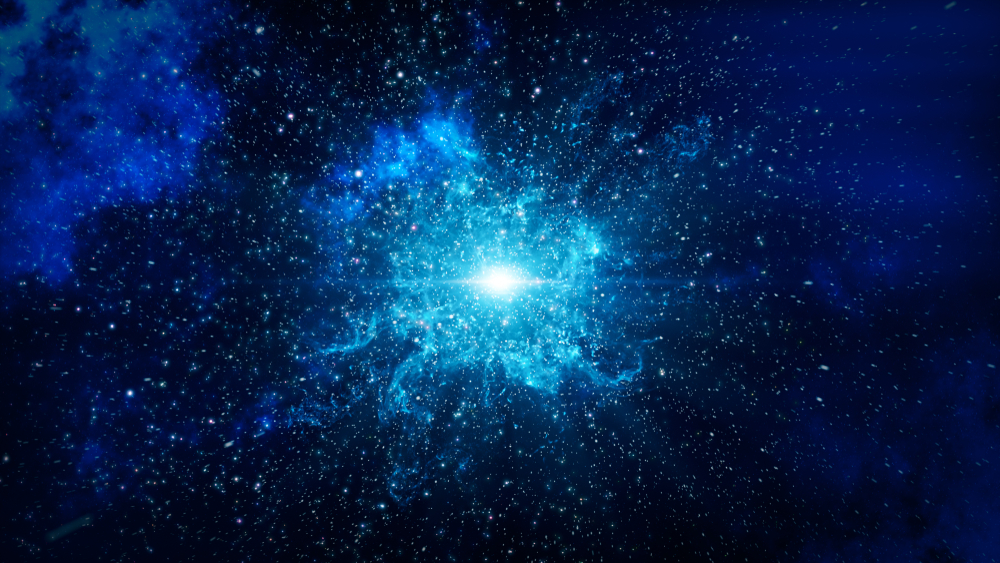 https://www.amazon.com/Visual-Galaxy-Ultimate-Guide-Beyond/dp/142622060X/ref=pd_sbs_14_img_0/135-1061482-6978844?_encoding=UTF8&pd_rd_i=142622060X&pd_rd_r=26290842-3e34-44e3-9ac8-00c316a43fa3&pd_rd_w=p9n0s&pd_rd_wg=YYc4I&pf_rd_p=5cfcfe89-300f-47d2-b1ad-a4e27203a02a&pf_rd_r=6RHVBQYBHBQQYXA9XT5B&psc=1&refRID=6RHVBQYBHBQQYXA9XT5B
https://www.amazon.com/Visual-Galaxy-Ultimate-Guide-Beyond/dp/142622060X/ref=pd_sbs_14_img_0/135-1061482-6978844?_encoding=UTF8&pd_rd_i=142622060X&pd_rd_r=26290842-3e34-44e3-9ac8-00c316a43fa3&pd_rd_w=p9n0s&pd_rd_wg=YYc4I&pf_rd_p=5cfcfe89-300f-47d2-b1ad-a4e27203a02a&pf_rd_r=6RHVBQYBHBQQYXA9XT5B&psc=1&refRID=6RHVBQYBHBQQYXA9XT5B The Milky Way, along with everything else in the universe, is moving through space. The earth moves around the sun, the sun around the Milky Way, and the Milky Way as part of the “Local Group.”
Meanwhile, the Local Group is moving relative to the Cosmic Microwave Background (CMB) radiation (a.k.a. the radiation left over from the Big Bang).
The Milky Way is full of toxic grease
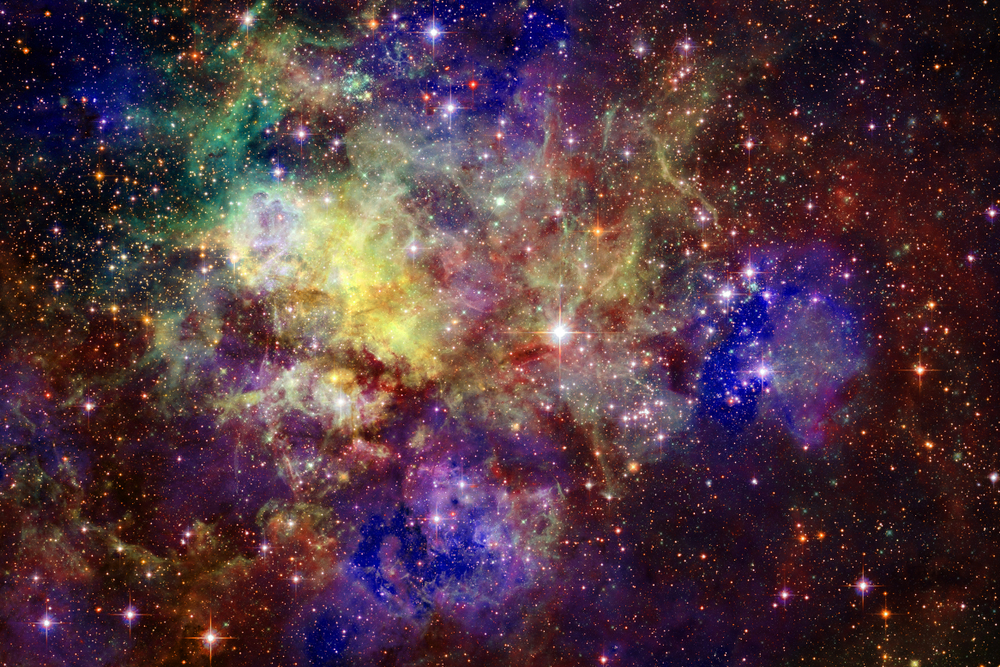 https://www.amazon.com/Visual-Galaxy-Ultimate-Guide-Beyond/dp/142622060X/ref=pd_sbs_14_img_0/135-1061482-6978844?_encoding=UTF8&pd_rd_i=142622060X&pd_rd_r=26290842-3e34-44e3-9ac8-00c316a43fa3&pd_rd_w=p9n0s&pd_rd_wg=YYc4I&pf_rd_p=5cfcfe89-300f-47d2-b1ad-a4e27203a02a&pf_rd_r=6RHVBQYBHBQQYXA9XT5B&psc=1&refRID=6RHVBQYBHBQQYXA9XT5B
https://www.amazon.com/Visual-Galaxy-Ultimate-Guide-Beyond/dp/142622060X/ref=pd_sbs_14_img_0/135-1061482-6978844?_encoding=UTF8&pd_rd_i=142622060X&pd_rd_r=26290842-3e34-44e3-9ac8-00c316a43fa3&pd_rd_w=p9n0s&pd_rd_wg=YYc4I&pf_rd_p=5cfcfe89-300f-47d2-b1ad-a4e27203a02a&pf_rd_r=6RHVBQYBHBQQYXA9XT5B&psc=1&refRID=6RHVBQYBHBQQYXA9XT5B Swirling through the mostly empty space between stars in our galaxy is a bunch of dirty grease. Oily, organic molecules known as aliphatic carbon compounds are produced in certain types of stars and then are leaked out into interstellar space.
(And we thought we were the only ones leaking grimy compounds into the atmosphere.)
"Thick" as a sheet of paper
 https://www.amazon.com/Visual-Galaxy-Ultimate-Guide-Beyond/dp/142622060X/ref=pd_sbs_14_img_0/135-1061482-6978844?_encoding=UTF8&pd_rd_i=142622060X&pd_rd_r=26290842-3e34-44e3-9ac8-00c316a43fa3&pd_rd_w=p9n0s&pd_rd_wg=YYc4I&pf_rd_p=5cfcfe89-300f-47d2-b1ad-a4e27203a02a&pf_rd_r=6RHVBQYBHBQQYXA9XT5B&psc=1&refRID=6RHVBQYBHBQQYXA9XT5B
https://www.amazon.com/Visual-Galaxy-Ultimate-Guide-Beyond/dp/142622060X/ref=pd_sbs_14_img_0/135-1061482-6978844?_encoding=UTF8&pd_rd_i=142622060X&pd_rd_r=26290842-3e34-44e3-9ac8-00c316a43fa3&pd_rd_w=p9n0s&pd_rd_wg=YYc4I&pf_rd_p=5cfcfe89-300f-47d2-b1ad-a4e27203a02a&pf_rd_r=6RHVBQYBHBQQYXA9XT5B&psc=1&refRID=6RHVBQYBHBQQYXA9XT5B Let’s imagine that the Milky Way had the same diameter as a Frisbee, Okay?
Can you guess what its thickness would be in this case? Believe it or not, it wouldn’t be much thicker than a sheet of paper.
The Milky Way is both spiral and barred
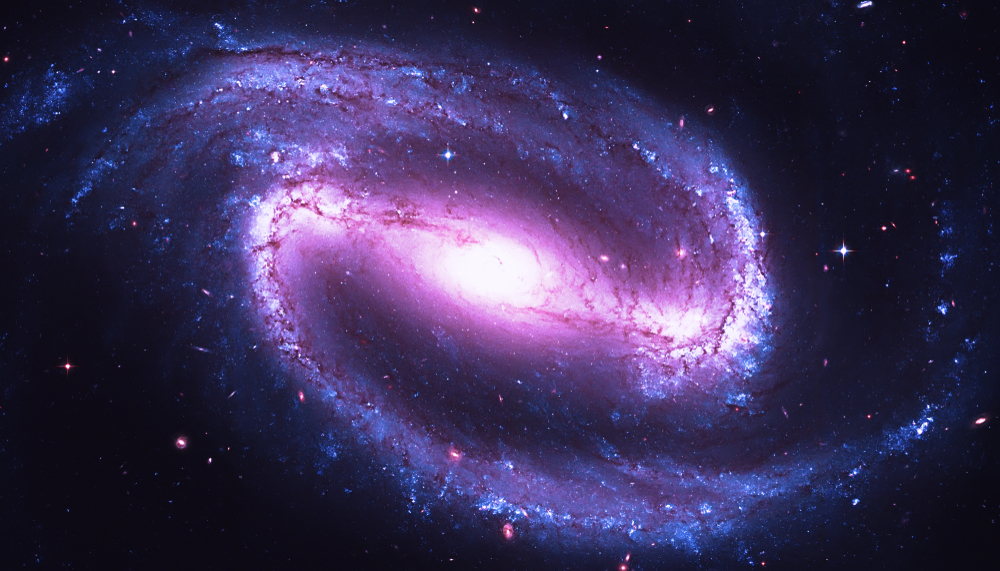 https://www.amazon.com/Visual-Galaxy-Ultimate-Guide-Beyond/dp/142622060X/ref=pd_sbs_14_img_0/135-1061482-6978844?_encoding=UTF8&pd_rd_i=142622060X&pd_rd_r=26290842-3e34-44e3-9ac8-00c316a43fa3&pd_rd_w=p9n0s&pd_rd_wg=YYc4I&pf_rd_p=5cfcfe89-300f-47d2-b1ad-a4e27203a02a&pf_rd_r=6RHVBQYBHBQQYXA9XT5B&psc=1&refRID=6RHVBQYBHBQQYXA9XT5B
https://www.amazon.com/Visual-Galaxy-Ultimate-Guide-Beyond/dp/142622060X/ref=pd_sbs_14_img_0/135-1061482-6978844?_encoding=UTF8&pd_rd_i=142622060X&pd_rd_r=26290842-3e34-44e3-9ac8-00c316a43fa3&pd_rd_w=p9n0s&pd_rd_wg=YYc4I&pf_rd_p=5cfcfe89-300f-47d2-b1ad-a4e27203a02a&pf_rd_r=6RHVBQYBHBQQYXA9XT5B&psc=1&refRID=6RHVBQYBHBQQYXA9XT5B Two-thirds of the galaxies in the known universe are spirals. Now, two-thirds of those are barred.
So, in reality, the Milky Way ticks both of these boxes, making it one of the most common galaxy designs.
Nobody knows how much the Milky Way weighs
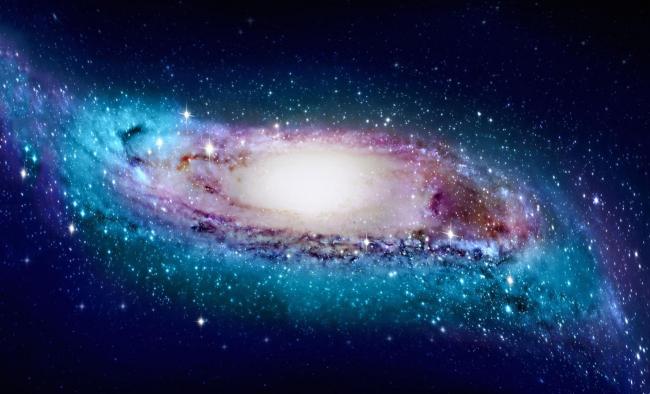 https://www.amazon.com/Visual-Galaxy-Ultimate-Guide-Beyond/dp/142622060X/ref=pd_sbs_14_img_0/135-1061482-6978844?_encoding=UTF8&pd_rd_i=142622060X&pd_rd_r=26290842-3e34-44e3-9ac8-00c316a43fa3&pd_rd_w=p9n0s&pd_rd_wg=YYc4I&pf_rd_p=5cfcfe89-300f-47d2-b1ad-a4e27203a02a&pf_rd_r=6RHVBQYBHBQQYXA9XT5B&psc=1&refRID=6RHVBQYBHBQQYXA9XT5B
https://www.amazon.com/Visual-Galaxy-Ultimate-Guide-Beyond/dp/142622060X/ref=pd_sbs_14_img_0/135-1061482-6978844?_encoding=UTF8&pd_rd_i=142622060X&pd_rd_r=26290842-3e34-44e3-9ac8-00c316a43fa3&pd_rd_w=p9n0s&pd_rd_wg=YYc4I&pf_rd_p=5cfcfe89-300f-47d2-b1ad-a4e27203a02a&pf_rd_r=6RHVBQYBHBQQYXA9XT5B&psc=1&refRID=6RHVBQYBHBQQYXA9XT5B Astronomers are still unsure how much exactly our galaxy weighs. Currently, estimates are ranging from 700 billion to 2 trillion times the mass of our sun.
Getting a better grasp is no easy task. Most of the Milky Way’s mass — perhaps 85 percent — is in the form of dark matter, which gives off no light and so is impossible to directly observe, according to the experts.
The very center is believed to be a black hole
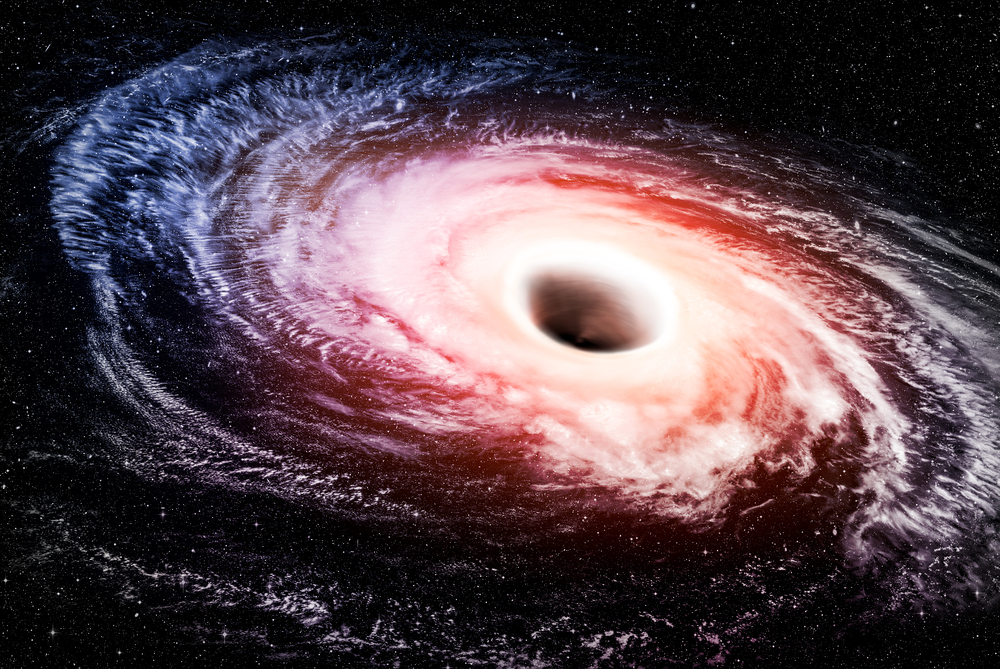 https://www.amazon.com/Visual-Galaxy-Ultimate-Guide-Beyond/dp/142622060X/ref=pd_sbs_14_img_0/135-1061482-6978844?_encoding=UTF8&pd_rd_i=142622060X&pd_rd_r=26290842-3e34-44e3-9ac8-00c316a43fa3&pd_rd_w=p9n0s&pd_rd_wg=YYc4I&pf_rd_p=5cfcfe89-300f-47d2-b1ad-a4e27203a02a&pf_rd_r=6RHVBQYBHBQQYXA9XT5B&psc=1&refRID=6RHVBQYBHBQQYXA9XT5B
https://www.amazon.com/Visual-Galaxy-Ultimate-Guide-Beyond/dp/142622060X/ref=pd_sbs_14_img_0/135-1061482-6978844?_encoding=UTF8&pd_rd_i=142622060X&pd_rd_r=26290842-3e34-44e3-9ac8-00c316a43fa3&pd_rd_w=p9n0s&pd_rd_wg=YYc4I&pf_rd_p=5cfcfe89-300f-47d2-b1ad-a4e27203a02a&pf_rd_r=6RHVBQYBHBQQYXA9XT5B&psc=1&refRID=6RHVBQYBHBQQYXA9XT5B The very center of the Milky Way contains a powerful gravitational force that scientists believe is a black hole. For that matter, they even baptized this black hole with the catchy name Sagittarius A*.
Astronomers believe this black hole weighs as much as 4 million of our suns put together. Just WOW!
It’s part of the "Virgo Supercluster"
 https://www.amazon.com/Visual-Galaxy-Ultimate-Guide-Beyond/dp/142622060X/ref=pd_sbs_14_img_0/135-1061482-6978844?_encoding=UTF8&pd_rd_i=142622060X&pd_rd_r=26290842-3e34-44e3-9ac8-00c316a43fa3&pd_rd_w=p9n0s&pd_rd_wg=YYc4I&pf_rd_p=5cfcfe89-300f-47d2-b1ad-a4e27203a02a&pf_rd_r=6RHVBQYBHBQQYXA9XT5B&psc=1&refRID=6RHVBQYBHBQQYXA9XT5B
https://www.amazon.com/Visual-Galaxy-Ultimate-Guide-Beyond/dp/142622060X/ref=pd_sbs_14_img_0/135-1061482-6978844?_encoding=UTF8&pd_rd_i=142622060X&pd_rd_r=26290842-3e34-44e3-9ac8-00c316a43fa3&pd_rd_w=p9n0s&pd_rd_wg=YYc4I&pf_rd_p=5cfcfe89-300f-47d2-b1ad-a4e27203a02a&pf_rd_r=6RHVBQYBHBQQYXA9XT5B&psc=1&refRID=6RHVBQYBHBQQYXA9XT5B As big as it is, the Milky Way is part of an even larger galactic structure. Our closest neighbors include the Large and Small Magellanic Clouds, and the Andromeda Galaxy – the closest spiral galaxy to the Milky Way.
Along with some 50 other galaxies, the Milky Way and its immediate surroundings make up a cluster known as the Local Group, which is in turn part of the even bigger Virgo Supercluster.
Democritus was the first to suggest that the Milky Way is made of stars
 https://www.amazon.com/Visual-Galaxy-Ultimate-Guide-Beyond/dp/142622060X/ref=pd_sbs_14_img_0/135-1061482-6978844?_encoding=UTF8&pd_rd_i=142622060X&pd_rd_r=26290842-3e34-44e3-9ac8-00c316a43fa3&pd_rd_w=p9n0s&pd_rd_wg=YYc4I&pf_rd_p=5cfcfe89-300f-47d2-b1ad-a4e27203a02a&pf_rd_r=6RHVBQYBHBQQYXA9XT5B&psc=1&refRID=6RHVBQYBHBQQYXA9XT5B
https://www.amazon.com/Visual-Galaxy-Ultimate-Guide-Beyond/dp/142622060X/ref=pd_sbs_14_img_0/135-1061482-6978844?_encoding=UTF8&pd_rd_i=142622060X&pd_rd_r=26290842-3e34-44e3-9ac8-00c316a43fa3&pd_rd_w=p9n0s&pd_rd_wg=YYc4I&pf_rd_p=5cfcfe89-300f-47d2-b1ad-a4e27203a02a&pf_rd_r=6RHVBQYBHBQQYXA9XT5B&psc=1&refRID=6RHVBQYBHBQQYXA9XT5B The ancient Greek philosopher Democritus, who lived from about 460 to 370 B.C., was the first known person to suggest that the Milky Way is made of stars.
Galileo Galilei (1564–1642) was the first to identify and resolve the band of light as many individual stars in 1610, with the help of his telescope.
"The Silver River"
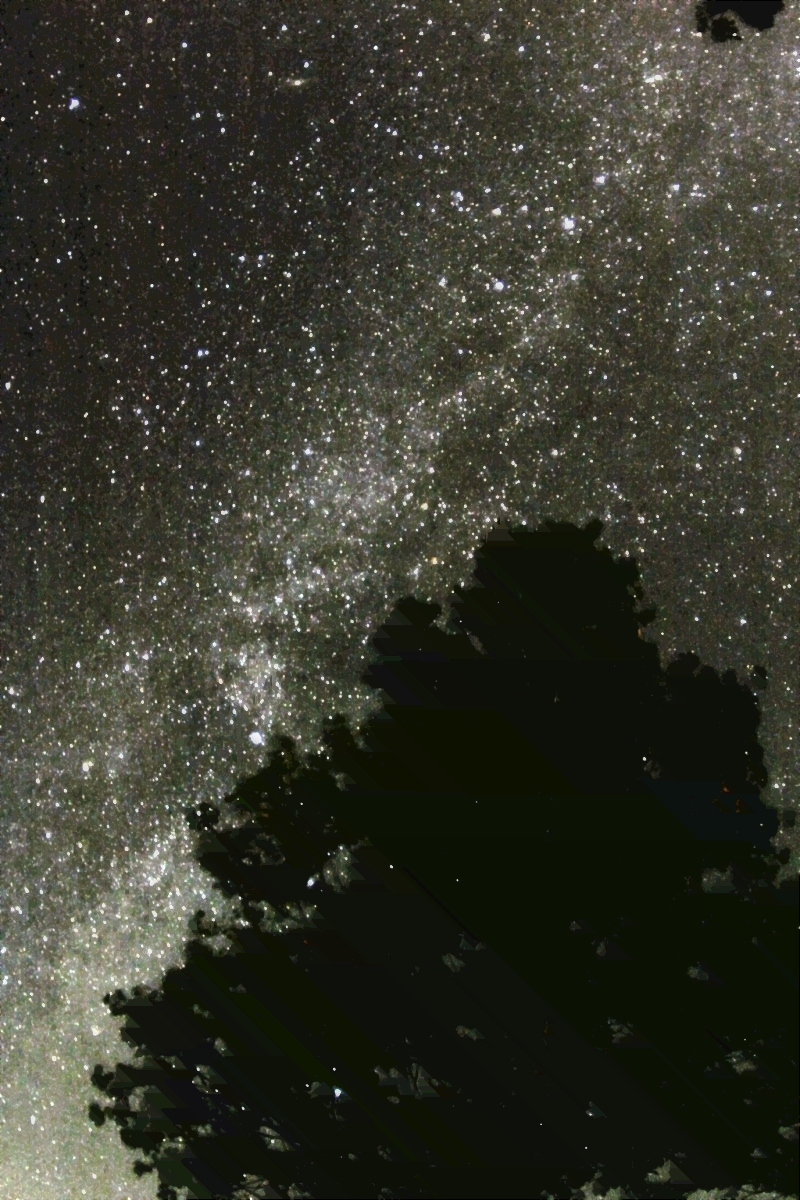 https://www.amazon.com/Visual-Galaxy-Ultimate-Guide-Beyond/dp/142622060X/ref=pd_sbs_14_img_0/135-1061482-6978844?_encoding=UTF8&pd_rd_i=142622060X&pd_rd_r=26290842-3e34-44e3-9ac8-00c316a43fa3&pd_rd_w=p9n0s&pd_rd_wg=YYc4I&pf_rd_p=5cfcfe89-300f-47d2-b1ad-a4e27203a02a&pf_rd_r=6RHVBQYBHBQQYXA9XT5B&psc=1&refRID=6RHVBQYBHBQQYXA9XT5B
https://www.amazon.com/Visual-Galaxy-Ultimate-Guide-Beyond/dp/142622060X/ref=pd_sbs_14_img_0/135-1061482-6978844?_encoding=UTF8&pd_rd_i=142622060X&pd_rd_r=26290842-3e34-44e3-9ac8-00c316a43fa3&pd_rd_w=p9n0s&pd_rd_wg=YYc4I&pf_rd_p=5cfcfe89-300f-47d2-b1ad-a4e27203a02a&pf_rd_r=6RHVBQYBHBQQYXA9XT5B&psc=1&refRID=6RHVBQYBHBQQYXA9XT5B In China, the Milky Way is known as “The Silver River.”
It’s said in Chinese Mythology that the river was placed there by the gods to keep their weaver apart from a herdsman who loved her. It’s romantic tragedy played out on the macro level.
"The Way the Dog Ran Away"
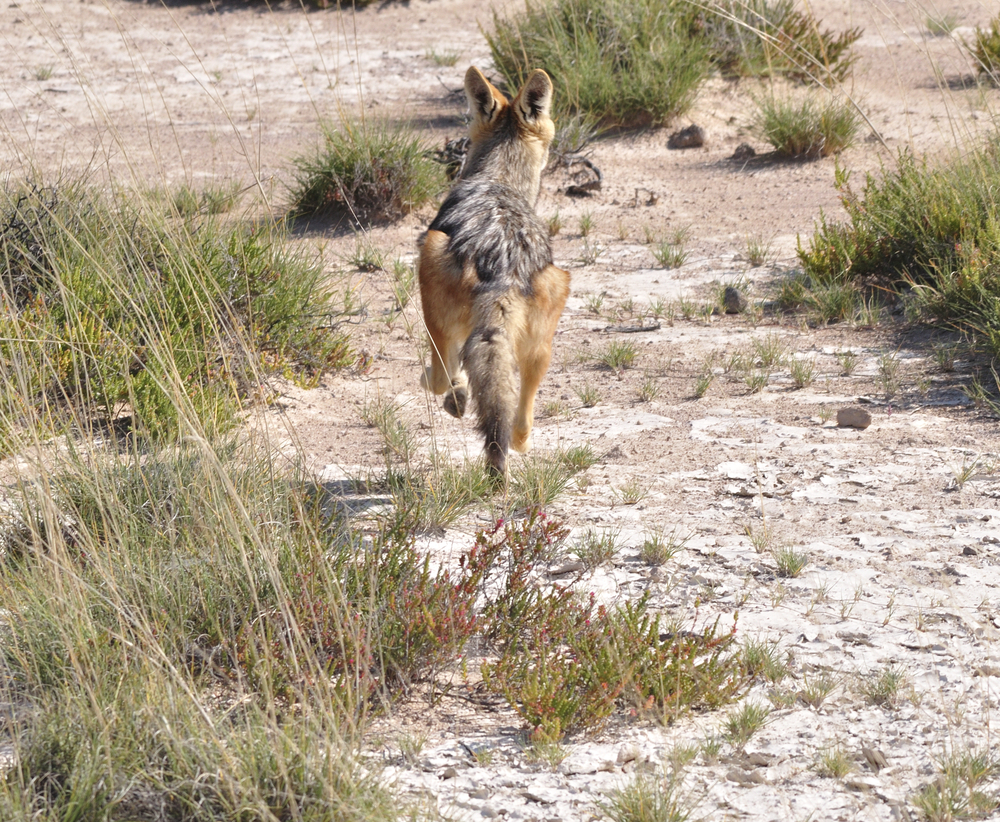 https://www.amazon.com/Visual-Galaxy-Ultimate-Guide-Beyond/dp/142622060X/ref=pd_sbs_14_img_0/135-1061482-6978844?_encoding=UTF8&pd_rd_i=142622060X&pd_rd_r=26290842-3e34-44e3-9ac8-00c316a43fa3&pd_rd_w=p9n0s&pd_rd_wg=YYc4I&pf_rd_p=5cfcfe89-300f-47d2-b1ad-a4e27203a02a&pf_rd_r=6RHVBQYBHBQQYXA9XT5B&psc=1&refRID=6RHVBQYBHBQQYXA9XT5B
https://www.amazon.com/Visual-Galaxy-Ultimate-Guide-Beyond/dp/142622060X/ref=pd_sbs_14_img_0/135-1061482-6978844?_encoding=UTF8&pd_rd_i=142622060X&pd_rd_r=26290842-3e34-44e3-9ac8-00c316a43fa3&pd_rd_w=p9n0s&pd_rd_wg=YYc4I&pf_rd_p=5cfcfe89-300f-47d2-b1ad-a4e27203a02a&pf_rd_r=6RHVBQYBHBQQYXA9XT5B&psc=1&refRID=6RHVBQYBHBQQYXA9XT5B According to Cherokee legend, however, the Milky Way was formed when a dog stole a bag of cornmeal. While being chased, he spilled some.
Thus, in Cherokee lore, the galaxy is referred to as “The Way the Dog Ran Away.”
An aerial view is impossible
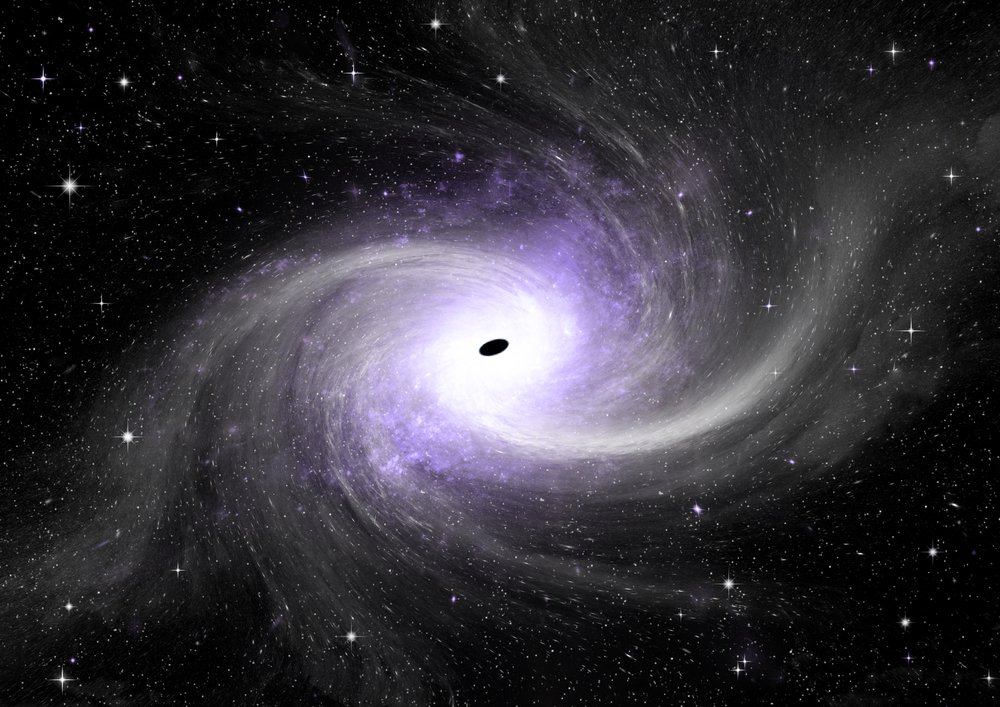 https://www.amazon.com/Visual-Galaxy-Ultimate-Guide-Beyond/dp/142622060X/ref=pd_sbs_14_img_0/135-1061482-6978844?_encoding=UTF8&pd_rd_i=142622060X&pd_rd_r=26290842-3e34-44e3-9ac8-00c316a43fa3&pd_rd_w=p9n0s&pd_rd_wg=YYc4I&pf_rd_p=5cfcfe89-300f-47d2-b1ad-a4e27203a02a&pf_rd_r=6RHVBQYBHBQQYXA9XT5B&psc=1&refRID=6RHVBQYBHBQQYXA9XT5B
https://www.amazon.com/Visual-Galaxy-Ultimate-Guide-Beyond/dp/142622060X/ref=pd_sbs_14_img_0/135-1061482-6978844?_encoding=UTF8&pd_rd_i=142622060X&pd_rd_r=26290842-3e34-44e3-9ac8-00c316a43fa3&pd_rd_w=p9n0s&pd_rd_wg=YYc4I&pf_rd_p=5cfcfe89-300f-47d2-b1ad-a4e27203a02a&pf_rd_r=6RHVBQYBHBQQYXA9XT5B&psc=1&refRID=6RHVBQYBHBQQYXA9XT5B Any photo you’ve ever seen of the Milky Way from space is either of another galaxy or an artist’s rendition.
Because we’re set inside the galaxy, we obviously cannot take an aerial view. Sorry, folks!
The Milky Way won’t live forever
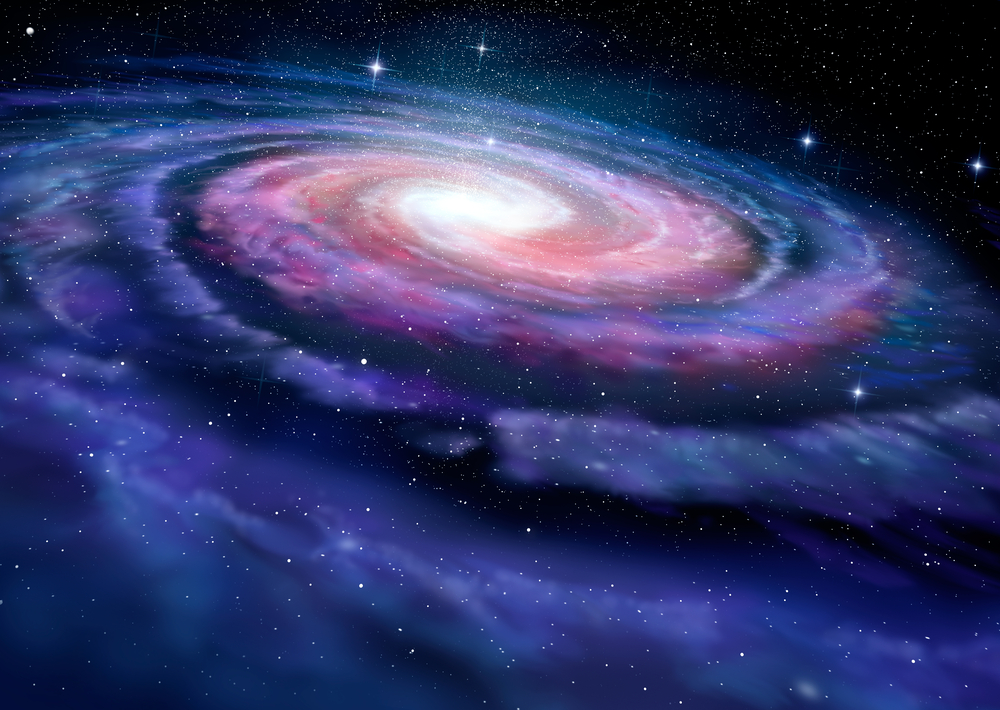 https://www.amazon.com/Visual-Galaxy-Ultimate-Guide-Beyond/dp/142622060X/ref=pd_sbs_14_img_0/135-1061482-6978844?_encoding=UTF8&pd_rd_i=142622060X&pd_rd_r=26290842-3e34-44e3-9ac8-00c316a43fa3&pd_rd_w=p9n0s&pd_rd_wg=YYc4I&pf_rd_p=5cfcfe89-300f-47d2-b1ad-a4e27203a02a&pf_rd_r=6RHVBQYBHBQQYXA9XT5B&psc=1&refRID=6RHVBQYBHBQQYXA9XT5B
https://www.amazon.com/Visual-Galaxy-Ultimate-Guide-Beyond/dp/142622060X/ref=pd_sbs_14_img_0/135-1061482-6978844?_encoding=UTF8&pd_rd_i=142622060X&pd_rd_r=26290842-3e34-44e3-9ac8-00c316a43fa3&pd_rd_w=p9n0s&pd_rd_wg=YYc4I&pf_rd_p=5cfcfe89-300f-47d2-b1ad-a4e27203a02a&pf_rd_r=6RHVBQYBHBQQYXA9XT5B&psc=1&refRID=6RHVBQYBHBQQYXA9XT5B In about four billion years, the Milky Way will collide with its nearest neighbor, the Andromeda Galaxy. The two spiral galaxies are currently hurtling toward each other at 250,000 miles an hour.
When they do smash into one another, it won’t be as cataclysmic as you might imagine. Earth will likely survive, and very few stars will actually be destroyed. Instead, the newly-formed mega-galaxy will offer a nightscape with a spectacular blend of stars unlike anything we see today.



























